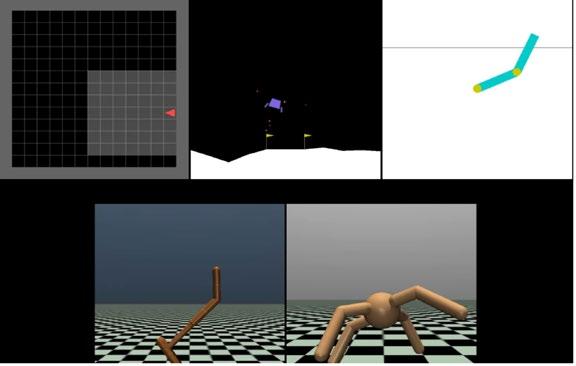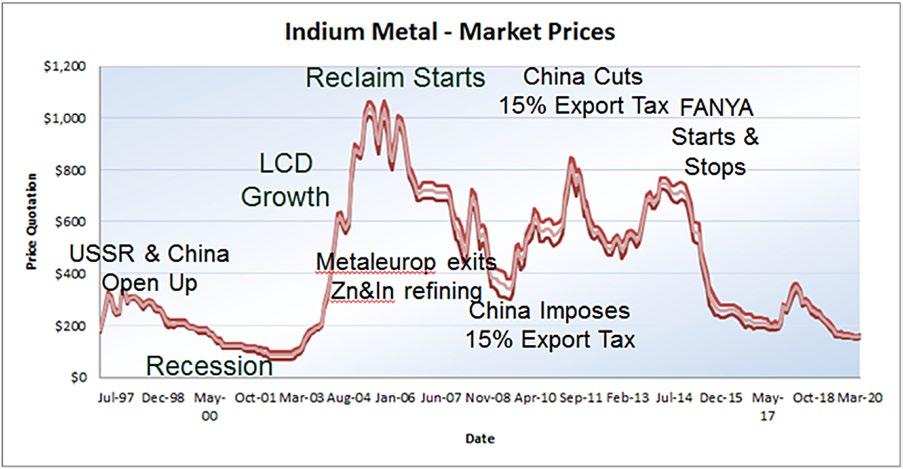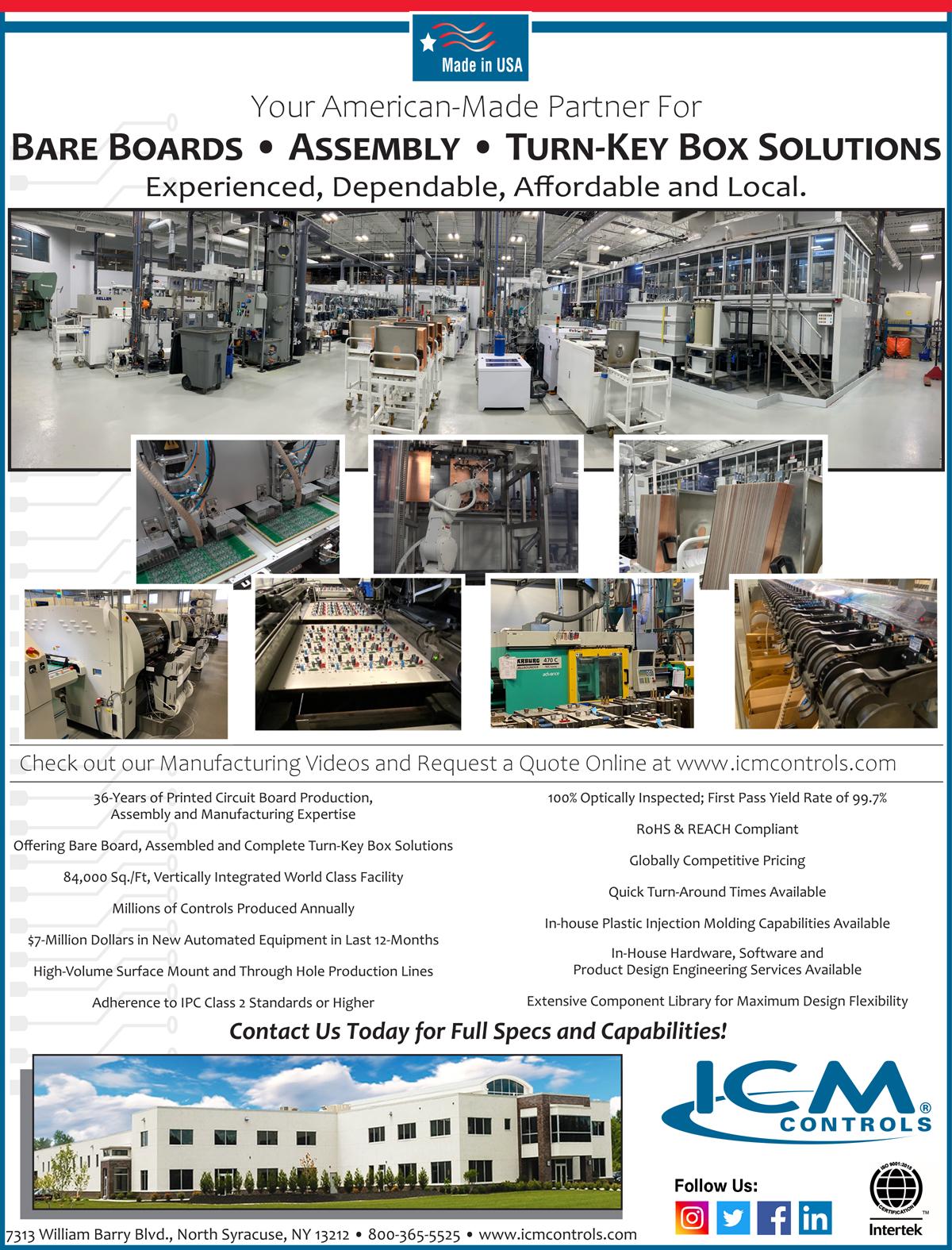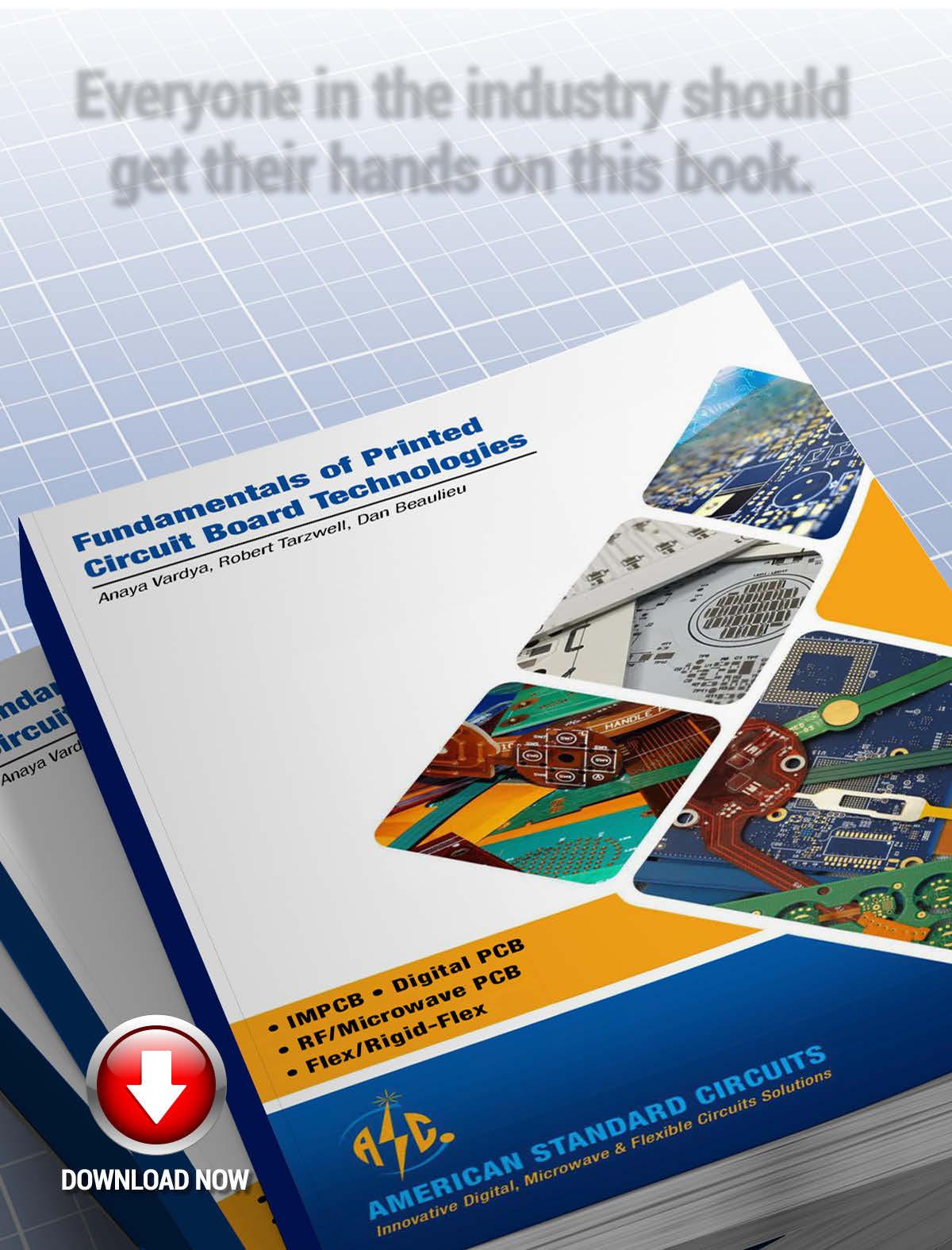
12 minute read
Solutions for Customer Support During Social Distancing
from Croll6e
by Thomas Swift
The Mannifest
Feature Column by Chris Ellis, MANNCORP INC.
Advertisement
In this difficult time caused by the COVID-19 outbreak, businesses are being forced to adapt. Business is not as usual, and as a mediumrange machinery supplier, we at Manncorp and our customers have come to appreciate the benefits of remote services.
Free, remote services have always been included in our model. This allows the machines to be up and running faster, solving any difficulties that face a customer running a new machine, while also eliminating the time and expense of sending a technician. However, this recent crisis has led to our team brainstorming some innovative new ideas.
As on-site staff is reduced across the nation, exceptional customer service has become necessitated. How we are meeting this high demand is by providing new training videos, direct contact with customer service representatives, and real-time help through TeamViewer.
Our videography team has been producing new videos that walk the viewer through the mechanical and software set-up of our machines. These videos cover information on pick-and-place machines, stencil printers, reflow ovens, and even our AOI machines for self-installations; they also demonstrate how to
attach accessories and remove shipping brackets. We even have tutorials on how to make time-saving programs, create vision files, and program a feeder.
Having done remote installations of our AOI machines for years has allowed us to fluidly adapt under the current conditions. The addition of videos and the advancement of instant-help technol- Figure 2: Online training on SMT fully automatic stencil printer.ogy has allowed us to go further. If the videos do not provide everything a customer • Board support issues, incorrectly may need, our team of experts can access programmed squeegee settings, or the machine through screen controlling. This simply not having a high-quality allows us to diagnose anything that may be stencil in the stencil printer going wrong and apply a solution in real-time. • A lack of training on correct profiling in In some cases, spare parts may be needed, and the reflow oven we can ship them overnight, allowing for a quick fix. Customers who use SMT equipment often wear many hats at their company. With this in mind, we have designed resources to help any customer set up and run a high-functioning machine. If needed, our senior tech can remotely train customers at a mutually ideal time. This training covers important subjects such as creating a file for each component, detecting problems like wrong parts, and ensuring correct orientation and sufficient solder paste. Too often, an SMT line functions at only 40–50% of its capacity. But we know that if each machine is optimized for speed and correct placement, that average can be increased drastically. By solving common problems, more people can reap the benefits of their initial investment. Common issues we see are: By interacting with knowledgeable staff members and watching our videos, customers can experience quick solutions. The result will be a high yield from the whole line-up. Without defects occurring, costs will be lowered, and fewer boards will be wasted. Through phone support or chat directly on a machine’s computer monitor, we can offer more specific advice. We have interacted with many companies dedicated to directly fighting the COVID-19 crisis. Northwestern University, who is working closely with Sibel Medical—a manufacturer of remote monitoring systems—is one of our most recent customers. Their remote monitoring systems have been identified by the U.S. FDA as critical technologies in the battle against the epidemic. These systems provide ICU-grade measurements of heart rate, respiratory rate, temperature, and blood oxygenation levels through a wireless, wear• Incorrect programming of vision files able format. or general programming issues for After the installs at Northwestern University, pick-and-place machines fine-tuning of the equipment was required,

and we were able to conduct these services remotely. The results were so positive that the university has decided to order a second production line.
Serving companies and organizations that are critical to our national infrastructure is crucial during this difficult time, and many customers are involved in government and military work. Most recently, we helped a contractor in Minnesota working for Naval Surface Warfare Center IHEODTD—a key component of the Defense Industrial Base.
When working with military contractors, personnel are often unable to enter facilities, and the organizations require remote contact alternatives. Working with companies housing sensitive information or hazardous products is one way that remote service will continue to be necessitated even after the stay-at-home order is lifted.
This is what we are doing at Manncorp. Hopefully, by hearing about our methods, other companies can develop their own solutions for remotely helping their customers. We urge companies in a position like ours to implement virtual or remote servicing methods in an effort to meet government guidelines. When this crisis has passed, businesses will open again, and it will be due to those who have done the vital work to keep things going in the meantime. SMT007
Editor’s note: Written by Emmalee Gagnon with technical expertise from Chris Ellis.
Chris Ellis is a sales manager/ engineer for Manncorp Inc. To read past columns or contact Ellis, click here.
Automating the Search for Entirely New ‘Curiosity’ Algorithms
Driven by an innate curiosity, children pick up new skills as they explore the world and learn from their experiences. Computers, by contrast, often get stuck when thrown into new environments.
To get around this, engineers have tried encoding simple forms of curiosity into their algorithms with the hope that an agent pushed to explore will learn about its environment more effectively. An agent with a child’s curiosity might go from learning to pick up, manipulate, and throw objects to understanding the pull of gravity— a realization that could dramatically accelerate its ability to learn many other things.
In recent years, the design of deep neural networks—algorithms that search for solutions by adjusting numeric parameters—has been automated with software like Google’s AutoML and auto-sklearn in Python. That’s made it easier for non-experts to develop AI applications. But while deep nets excel at specific tasks, they have trouble generalizing to new situations. Algorithms expressed in code in a high-level programming language, by contrast, have the capacity to transfer knowledge across different tasks and environments.
MIT researchers created a “meta-learning” algorithm that generated 52,000 exploration algorithms. They found that the top two were entirely new—seemingly too obvious or counterintuitive for a human to have proposed. Both algorithms generated exploration behavior that substantially improved learning in a range of simulated tasks, from navigating a two-dimensional grid based on images to make a robotic ant walk. Because the metalearning process generates high-level computer code as output, both algorithms can be dissected to peer inside their decision-making processes. (Source: MIT)

Indium Metal Forecast:
Supply Chain Strong, Demand Continues to Grow
Article by Donna Vareha-Walsh
INDIUM CORPORATION
Indium is a critical metal for the indium-tin oxide (ITO) market and other coating applications. Donna VarehaWalsh—director of sales and global supply chain and trade compliance at Indium Corporation—describes the plentiful global supply of indium and its recycling loop, examines indium’s history of price volatility and the market reactions from the recent Fanya Metal Exchange auction, and provides an overview of indium supply and demand drivers, as well as the impact of recycling efforts.
Indium pricing has been steady over the last few years through 2020, even under the pressure of an ongoing global pandemic. This year, indium has averaged $150 to $165 per kg based on Fastmarkets MB’s current market pricing.
Indium has had a volatile past with the increases driven from liquid-crystal display (LCD) growth in the early 2000s, import and export taxes placed on the metal by China, and then the price run-up from the Fanya Metal Exchange. Figure 1 shows a good representation of the prior market volatility that has subsided as we have seen steady prices over the last few years.
The supply chain of indium is global in nature. Based on the USGS, 760 tons were produced in 2019. Additionally, there is a strong reclaim loop constantly feeding the supply chain.
The demand for indium is mainly in the form of ITO, which is used in LCD screens for flatpanel devices—such as mobile phones, computers, and televisions—and in solder, alloys, electrical components, and semiconductors.
The compound annual growth rate (CAGR) for global ITO will increase by 7.7% by 2022, with growth coming primarily from China


and South Korea. The main growth drivers for indium demand come from larger screen sizes, television shipments, small moves to organic light-emitting diodes (OLED), growth in quantum dots, and the developed world deployment of 5G. The caveat is, as the price of indium increases, so do the R&D efforts by display companies to use thinner coatings or alternatives.
ITO alternatives have been met with limited adoption in the display industry. Alternative transparent conductors—such as silver nanowires, carbon nanotubes, graphene, and metal mesh grids—will eventually find their niche application, but it won’t be in the non-touch display back panel anytime soon. None of these alternatives are a drop-in replacement for the entrenched and established ITO infrastructure and 30-year processing “knowhow” of ITO.
Closed-loop ITO target recycling promotes responsible use of indium and further extends value and efficiencies to our display customers, making it hard for these alternative technologies to find a competitive entry point. While Indium Corporation closely monitors alternative transparent conductor technologies, near-term opportunities are limited. Indium Corporation has an indium recycling facility in South Korea that supports the closed-loop system.
The supply chain for indium is strong and able to meet demand. The supply can also expand to meet increased or new demand given total proven reserves equal to 50,000 MT, equivalent to 50–100 years of consumption. Additionally, the indium supply in zinc and copper concentrates is plentiful. Extraction and refining can be expanded to meet the demand for emerging technologies. SMT007
Sprayable User Interfaces
For decades, researchers have envisioned a world where digital user interfaces are seamlessly integrated with the physical environment until the two are virtually indistinguishable from one another.
Recently, a group of researchers from MIT’s Computer Science and Artificial Intelligence Laboratory (CSAIL) came up with SprayableTech—a system that allows users to create room-sized interactive surfaces with sensors and displays. The system, which uses airbrushing of functional inks and enables various displays, like interactive sofas with embedded sensors to control your television and sensors for adjusting lighting and temperature through your walls.
SprayableTech lets users channel their inner Picassos: After designing your interactive artwork in the 3D editor, it automatically generates stencils for airbrushing the layout onto a surface. Once they’ve created the stencils from cardboard, a user can then add sensors to the desired surface—whether it’s a sofa, a wall, or even a building—to control various appliances like your lamp or television.
“Since SprayableTech is so flexible in its application, you can imagine using this type of system beyond walls and surfaces to power larger-scale entities like interactive smart cities and interactive architecture in public places,” says Michael Wessely, a postdoc in CSAIL and lead author on a new paper about SprayableTech. “We view this as a tool that will allow humans to interact with and use their environment in newfound ways.”
By using the airbrush technology, they’re no longer limited to the size of the printer, the area of the screen-printing net, or the size of the hydrographic bath, and there are thousands of possible design options. (Source: MIT)

Everyone in the industry should get their hands on this book.


A “must-have” for PCB designers, OEMs and fabricators, this free e-Book explains very complicated technology in a way that is easy to understand.


Siemens and Valor: Two Complementary
DFM Technologies E
Before IPC APEX EXPO kicked off, Andy Shaughnessy attended a Siemens seminar in San Diego on smart manufacturing for electronics and the integration of technologies from Siemens’ digital industry software and Valor. Afterward, Andy spoke with Andy Farrington, director of portfolio development for the Americas, about the event, as well as some of the hot topics and solutions that the speakers addressed.
PVA Manufactures COVID-19
Emergency Ventilator E
PVA, a global supplier of automation equipment servicing the electronics, medical device, telecommunications, semiconductor, and defense industries, has rapidly manufactured an emergency ventilator to help combat supply shortages during the coronavirus (COVID-19) pandemic.
EPTAC Preparing Young People for
Future in Industry E
In this video interview from the show, Guest Editor Kelly Dack and Leo Lambert, VP/technical director of EPTAC Corporation, discuss the impact of internships and apprenticeships, the importance of IPC specifications, the effectiveness of certification.
Sono-Tek is Joining the Fight
Against COVID-19 E
Sono-Tek Corporation, the leading developer and manufacturer of ultrasonic coating systems, announced that it joined the fight against COVID-19 in several ways.
Mycronic Publishes the 2019 Annual
and Sustainability Report E
Mycronic AB publishes the 2019 Annual and Sustainability Report. The Annual and Sustainability Report is available on the company web site as a PDF.
Solid-state Batteries E
Rehm is working on the development of new production technologies for solid-state batteries as part of a research cooperation.
Panasonic: From Hardware to
Solutions and Data E
In this video interview, Managing Editor Nolan Johnson speaks with Sean Murray—director of sales, service, operations, and logistics process automation at Panasonic—about the company’s focus on software and information management on top of their long history in hardware and equipment.
The Foundation of Industry 4.0 E
When adopting IoT solutions, start with three main considerations. First, assess which parts of the production cycle can be automated and/ or monitored most effectively with IoT devices connected to an analytics platform. IoT technology should be matched to the production cycle of your operation.
Electrolube Resin a Success for Two
Wheeler EV Batteries In India E
Electrolube, the global manufacturer of specialist electrochemicals, announced the success of its ER2221 resin for the protection of EV batteries in popular two-wheeler vehicles in India.








